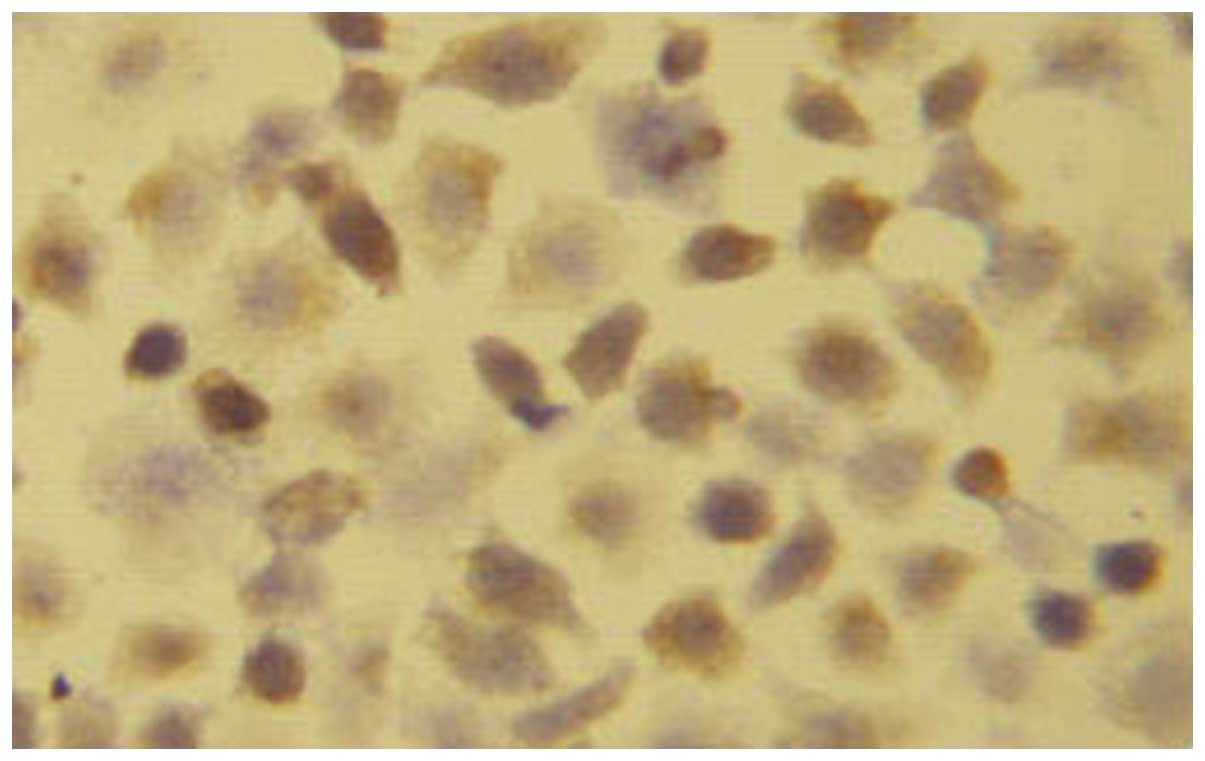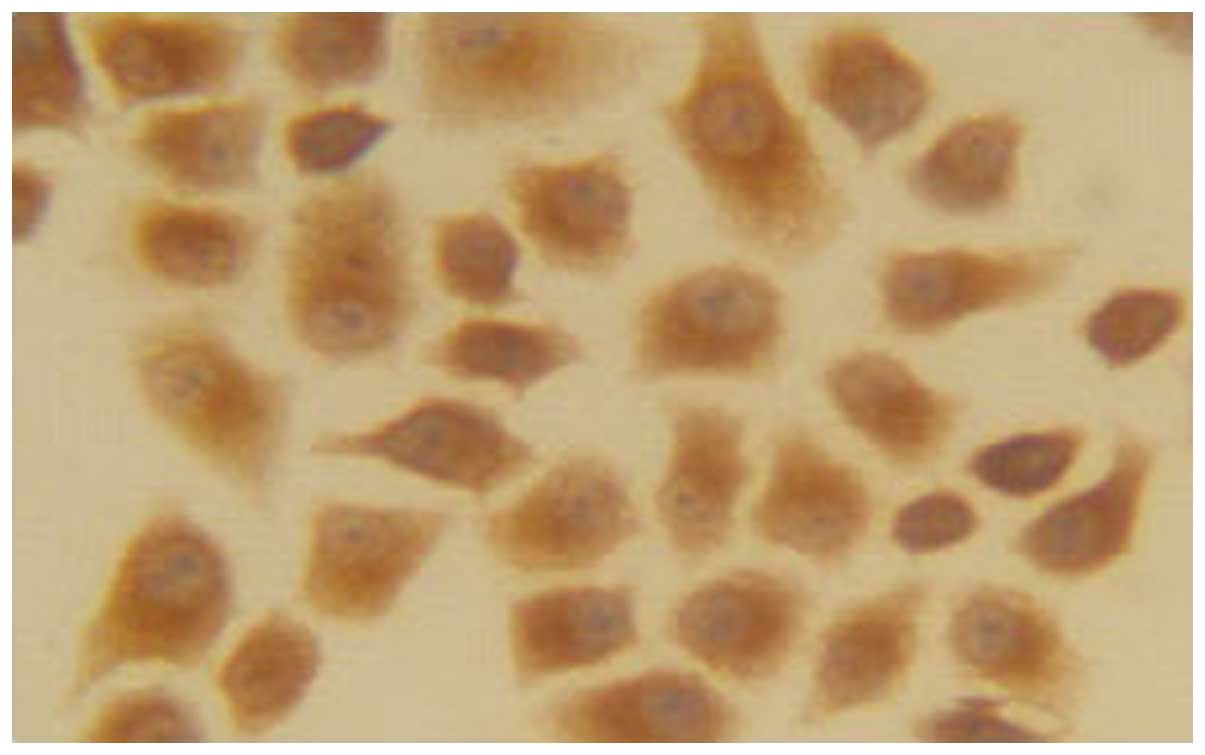Study on chemotherapeutic sensitizing effect of nimotuzumab on different human esophageal squamous carcinoma cells
- Authors:
- Published online on: December 2, 2015 https://doi.org/10.3892/ol.2015.3989
- Pages: 973-978
-
Copyright: © Yang et al. This is an open access article distributed under the terms of Creative Commons Attribution License.
Metrics: Total
Views: 0 (Spandidos Publications: | PMC Statistics: )
Total PDF Downloads: 0 (Spandidos Publications: | PMC Statistics: )
Abstract
Esophageal cancer is one of the leading causes of mortality worldwide. Although, surgery, radio‑ and chemotherapy are used to treat the disease, the identification of new drugs is crucial to increase the curative effect. The aim of the present study was to examine the chemotherapeutic sensitizing effect of nimotuzumab (h‑R3) and cisplatin cytotoxic drugs cisplatin (DDP) and 5‑fluorouracil (5‑FU) on esophageal carcinoma cells with two different epidermal growth factor receptor (EGFR) expressions. The expression of EGFR was detected in the human EC1 or EC9706 esophageal squamous cell carcinoma cell line using immunohistochemistry. The inhibitory effect of DDP and 5‑FU alone or combined with h‑R3 on EC1 or EC9706 cell proliferation was detected using an MTT assay. Flow cytometry and the TUNEL assay were used to determine the effect of single or combined drug treatment on cell apoptosis. The results showed that the expression of EGFR was low in EC1 cells but high in EC9706 cells. The inhibitory effect of the single use of h‑R3 on EC1 or EC9706 cell proliferation was decreased. The inhibitory effect between single use of h‑R3 alone and combined use of the chemotherapy drugs showed no statistically significant difference (P>0.05) on the EC1 cell growth rate, but showed a statistically significant difference (a=0.05) on EC9706 cell growth rate. The results detected by flow cytometry and TUNEL assay showed that the difference between single use of h‑R3 alone and the control group was statistically significant with regard to the EC1 apoptosis rate effect (P<0.05), but not statistically significant for EC9706 (P>0.05). However, statistically significant differences were identified in the apoptotic rate of EC9706 cells between the h‑R3 combined chemotherapy group and single chemotherapy group (P<0.05), but not on in the EC1 chemotherapy group (P>0.05). In conclusion, the sensitization effect of h‑R3 on chemotherapy drugs is associated with the expression level of EGFR in EC1 or EC9706 cells. The cell killing effect of the combined use of h‑R3 with DDP and 5‑FU showed no obvious synergistic effect compared to the single-drug group, but only an additive effect.











